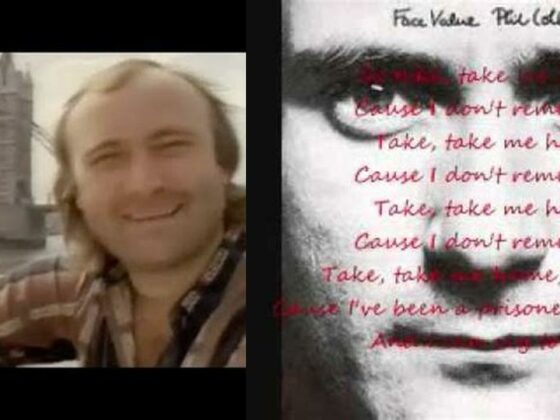Discover the enchanting world of “Te Quiero Dijiste” by Lisa Ono as we delve into the English lyrics of this timeless song. Join us on a journey of love, longing, and nostalgia as we unravel the beauty and emotions woven into the heartfelt verses. Whether you’re a music enthusiast or simply curious about the power of cross-cultural melodies, this exploration promises to captivate your senses and leave you humming along. Get ready to immerse yourself in the magic of “Te Quiero Dijiste” like never before!
Te Quiero Dijiste Lisa Ono English Lyrics: A Journey of Love, Longing, and Nostalgia
In the realm of music, few songs have captured the essence of love, longing, and nostalgia as profoundly as Muñequita Linda (Te Quiero; Dijiste). Originally released in the 1940s, this timeless bolero has transcended generations, captivating listeners with its haunting melody and heartfelt lyrics.
The Genesis of a Classic: Muñequita Linda’s Origins
The story of Muñequita Linda begins with María Grever, a prolific Mexican songwriter whose exquisite compositions have left an indelible mark on Latin American music. It was in the 1940s that Grever penned this masterpiece, showcasing her gift for crafting songs that resonate with the deepest human emotions.
Thalía’s Rendition: Breathing New Life into a Classic
While Muñequita Linda has been covered by numerous artists over the years, it was Thalía’s rendition that brought the song to new heights. With her powerful vocals and emotive delivery, Thalía infused the song with a fresh energy, captivating audiences worldwide.
Unveiling the Heartfelt Lyrics: A Tale of Love and Longing
At the core of Muñequita Linda lies a tale of unrequited love and the ache of separation. The lyrics, beautifully crafted by María Grever, paint a vivid picture of a heart yearning for its beloved, longing for a connection that seems elusive.
“Te quiero, dijiste, munequita linda,” the song begins, setting the stage for a poignant narrative. The protagonist, filled with longing, recalls the tender words spoken by their loved one, words that promised love and companionship.
As the song progresses, the protagonist’s pain becomes palpable. They lament the distance that separates them from their beloved, expressing their desire to be reunited. The lyrics capture the bittersweet agony of unfulfilled love, leaving listeners with a sense of melancholic longing.
The Cultural and Historical Significance of Muñequita Linda
Muñequita Linda transcends its status as a mere song; it has become a cultural and historical artifact that represents the golden era of Latin American music. The song embodies the essence of bolero, a genre that originated in Cuba and spread throughout the region, capturing the hearts of millions.
Muñequita Linda serves as a gateway to the past, allowing listeners to delve into the rich musical heritage of Latin America and appreciate the artistry of previous generations. Its enduring popularity is a testament to the song’s timeless appeal and its ability to evoke deep emotions in listeners across generations.
Frequently Asked Questions about Muñequita Linda (Te Quiero; Dijiste)
- Who wrote Muñequita Linda (Te Quiero; Dijiste)?
María Grever, a renowned Mexican songwriter, composed the song in the 1940s.
- What genre does Muñequita Linda fall under?
Muñequita Linda is a bolero, a genre that originated in Cuba and spread throughout Latin America.
- Why is Muñequita Linda considered a classic?
Muñequita Linda is considered a classic due to its timeless appeal and its ability to resonate with listeners across generations.
- What makes Thalía’s rendition of Muñequita Linda unique?
Thalía’s rendition adds her signature touch to the song, infusing it with her powerful vocals and emotive delivery.
- What emotions does Muñequita Linda evoke?
Muñequita Linda evokes a range of emotions, including love, longing, and nostalgia.
- Has Muñequita Linda been covered by other artists?
Yes, Muñequita Linda has been covered by various artists over the years, including Tito Puente, Trío Los Panchos, and Ana Gabriel.
- What impact did Muñequita Linda have on Thalía’s career?
Muñequita Linda played a significant role in Thalía’s career, allowing her to showcase her vocal prowess and artistic range.
- What is the significance of Muñequita Linda in Mexican culture?
Muñequita Linda holds a special place in Mexican culture as it represents the rich heritage of bolero music.
- Are there any live performances of Thalía singing Muñequita Linda?
Yes, Thalía has performed Muñequita Linda live on multiple occasions, captivating audiences with her powerful vocals and emotional delivery.
- Has Muñequita Linda been featured in any movies or TV shows?
Muñequita Linda has made appearances in several movies and TV shows over the years, further cementing its status as a timeless classic.
- What is the origin of the song’s title, Muñequita Linda?
The title Muñequita Linda translates to “Beautiful Little Doll” in English, capturing the delicate and enchanting nature of the song.
Muñequita Linda (Te Quiero; Dijiste) is more than just a song; it is a testament to the enduring power of love, longing, and nostalgia. Through its heartfelt lyrics and captivating melody, the song has touched the lives of countless listeners, leaving an indelible mark on the landscape of Latin American music.
Questions & FAQ about Te Quiero Dijiste Lisa Ono English Lyrics
Who wrote Muñequita Linda (Te Quiero; Dijiste)?
María Grever, a renowned Mexican songwriter, composed the song in the 1940s.
What genre does Muñequita Linda fall under?
Muñequita Linda is a bolero, a genre that originated in Cuba and spread throughout Latin America.
Why is Muñequita Linda considered a classic?
Muñequita Linda is considered a classic due to its timeless appeal and its ability to resonate with listeners across generations.


